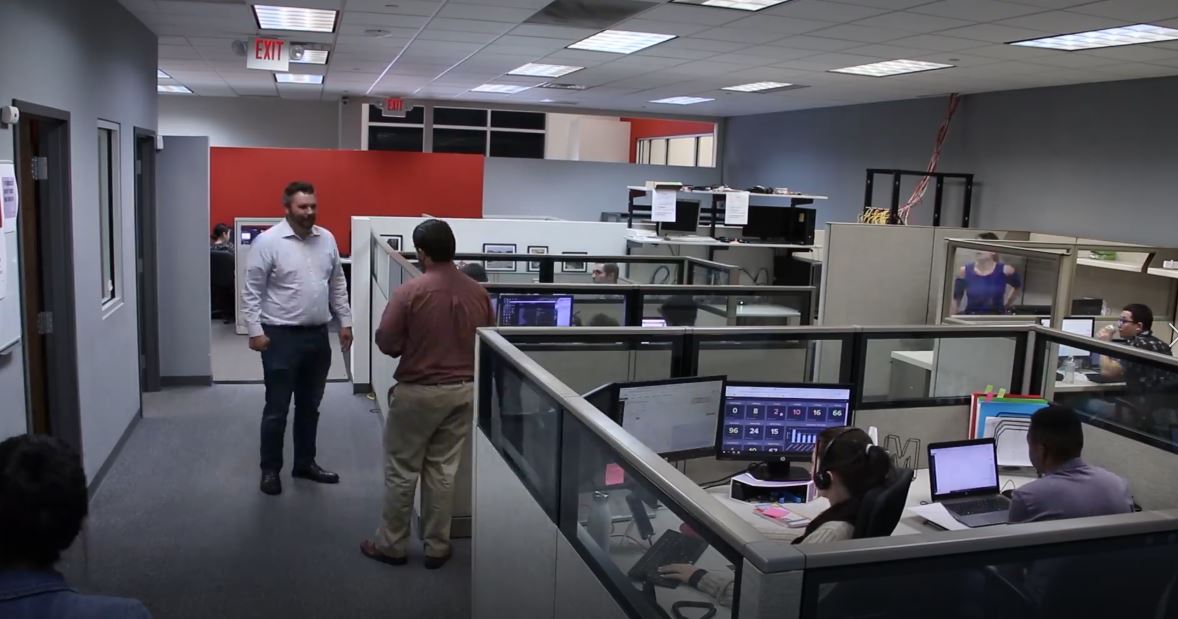Originally printed New Jersey Banker magazine Summer 2020 issue
By the time this article is in print, most of us in the professional services sector will still be working from home due to COVID-19, leaving vast corporate office parks sitting empty. This huge wasted operating cost forces us to confront a daunting question: When we open back up, what value does a physical office bring to our business? We thought physical offices were a necessity in nurturing company culture and optimizing collaboration, but was that real or simply an artifact of an outdated business dogma?
The debate over remote work vs. office productivity is not a new one. Ever since broadband high speed Internet started coming around in the 1990s, technology has allowed most office resources – documents, phones, emails and applications to be run remotely, most commonly from the home office. Yet, we still had offices. The rationale was offices helped productivity, collaboration, accountability, relationships and culture based on co-workers seeing one another face-to-face, every day. We spent billions of hours commuting, billions of dollars on gasoline and billions of dollars on office space…all for the privilege of sitting in a physical room with each other. And we did this, even though relatively inexpensive technology for us to collaborate virtually had been around for at least 10 years.
Will these last 3 months of COVID-19 remote work change any of our evaluation of remote work vs. in-office productivity?
Many businesses will realize that with current technology the COVID-19 remote work experience has been quite productive. If COVID-19 had been COVID-97, as in back in 1997 when Domain was founded, it would have been a very different remote work experience. At that time, a 56k modem was the gold standard of remote connectivity – one had to “dial-in” to the office with software like PC Anywhere, and connectivity speed was a fraction of the high speed Internet available to us in 2020. The cloud, as we know it, didn’t exist with communication limited to email and document sharing mainly done by facsimile. A pandemic back then would have decimated professional service business productivity. Having witnessed the evolution of technology since then, it’s truly a wonder how technology has leveled the playing field between what you can get done at home vs in the office.
There have been many examples of businesses moving to remote work prior to COVID-19. Some considered that progressive, however others were more cynical. A common objection was that even though some staff may like working from home, it would come at the expense of productivity. Studies may have shown that remote workers were more productive than office workers, but the cynics among us assumed that it may work for IBM or Microsoft but it would never work for our company. Or if it could work, there was no free lunch. There MUST be a cost or risk to the company, otherwise why doesn’t everybody do it? The siren’s song of remote work seemed too good to be true. Happy employees? No commuting? Lower cost? More productivity? What’s the punchline, where’s the “But…?”
What COVID-19 has taught us is the “But…” may have been overblown, mostly borne from fear, not facts. Those of us who were ambivalent about the possibility for remote work were forced by this virus to work through our concerns. Many are now realizing fears of lost productivity, slow communications and reduced visibility were not only overblown, but rooted in the fear of the unknown.
So what does this mean for our physical office space after COVID-19? I think we can reasonably assume a meaningful portion of workers will now ask, or be asked, to continue to work remotely. What percentage? That is still anyone’s guess. What we can safely assume is that current office space will be emptier, and businesses will be needing smaller or different workspaces in the future.
At Domain we already had a significant portion of our staff that worked remotely prior to COVID-19. Some roles we knew could be done remotely, others we were pretty sure had to be in the office. COVID-19 showed us that was also a false assumption. With the exception of a handful of roles tied to old school technology like US Mail and paper checks, almost ALL of our staff were able to function from home. The only other staff sitting idle were those responsible for managing the physical office space like maintenance and cleaning staff. For us, this further made apparent the true total cost of maintaining an office.
We are now reevaluating our need for office space in the future. As long as the virus lingers, we are eliminating shared spaces and moving back towards private offices. Ironically, this is the costliest way to setup a commercial office, and it is what most staff already have setup for free in their private homes. This is the primary reason that we are in no rush to open our physical offices (at least until we have a vaccine or herd immunity). I have gone out of my way to get to the office in the last week or two, only to still be in a Zoom or MS Teams meeting with staff on the other side of the building. Frankly, it is easier and safer than trying to meet with people in a conference room with masks. I am all for in-person collaboration, but if we are all paranoid about infecting each other, is in-person collaboration really that much more superior to Zoom or MS Teams? I think the answer is no. So for now, even if we are “open,” why bother going to the office?
After the virus passes, I think the office will still find ways to call us back. Particularly for those of us who are energized and motivated by the physical presence of their team and co-workers. Human interaction carries with it many mental/emotional benefits, and many would agree that there is nothing quite as validating as a good chuckle during a team lunch or ideating, brainstorming, debating, whiteboarding and socializing with a team you love. I think another lesson we (hopefully) learned from COVID-19 is how much we liked the people we worked with. We still spend as much time virtually with them as we do our own families, and I am sure we are going to yearn for more of that to happen in person sometime in the future.
As for the post-COVID office layout, the irony is it will be essentially the opposite of the private office layouts we are setting up now with the virus amongst us. As we transition out of quarantine, we are going out of our way to keep people apart. Yet after this is over, I believe our company will continue to do most of our individual work at home and use the physical office to meet and collaborate, essentially the inverse of the transitional social distancing setup being rolled out now. Shared workspaces, common areas, lecture halls, conference and team rooms – basically all the types of layouts that terrify us right now – will be the primary reason we go back into the office in the future.
A key counter balancing point is to think deeply about how our COVID-19 remote work experience will translate to remote work post-COVID. I don’t want us to get too far in love with how we were able to execute remotely now, because we are in unprecedented times. A great deal of our remote work experience may be specific to this unique time when ALL of us are remote. If your clients and coworkers are all also remote it is far more acceptable to get them to join you in a Zoom video conference. But… what happens when they are all in the office together and you are the only one working from home? Are they all going to go to a conference room that is setup for videoconferencing just to include you? Will dialing into the conference bridge using a phone water down your participation and experience with the team? I suspect it will. The potential lesson from this distinction is to plan for the world the way we think it will be in the future, not simply what we experienced in the last 3 months together. As a counter-counter point, the hope is we won’t also still be home schooling our kids at the same time!
One thing is likely, the world and our use of office space and technology will change. Will your business lead that change or will you follow others from behind to see what happens?



